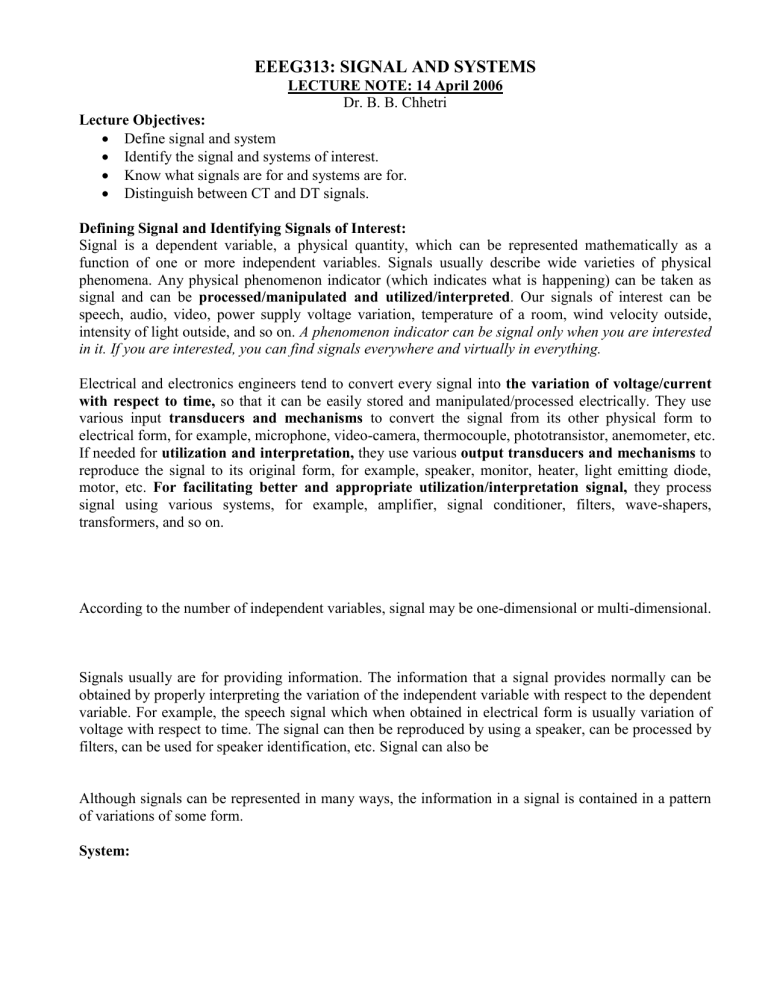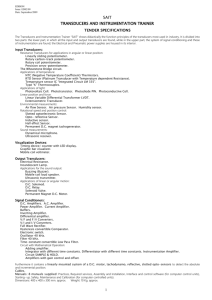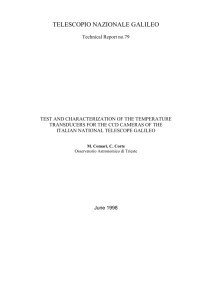SIGNAL AND SYSTEMS

EEEG313: SIGNAL AND SYSTEMS
LECTURE NOTE: 14 April 2006
Dr. B. B. Chhetri
Lecture Objectives:
Define signal and system
Identify the signal and systems of interest.
Know what signals are for and systems are for.
Distinguish between CT and DT signals.
Defining Signal and Identifying Signals of Interest:
Signal is a dependent variable, a physical quantity, which can be represented mathematically as a function of one or more independent variables. Signals usually describe wide varieties of physical phenomena. Any physical phenomenon indicator (which indicates what is happening) can be taken as signal and can be processed/manipulated and utilized/interpreted . Our signals of interest can be speech, audio, video, power supply voltage variation, temperature of a room, wind velocity outside, intensity of light outside, and so on.
A phenomenon indicator can be signal only when you are interested in it. If you are interested, you can find signals everywhere and virtually in everything.
Electrical and electronics engineers tend to convert every signal into the variation of voltage/current with respect to time, so that it can be easily stored and manipulated/processed electrically. They use various input transducers and mechanisms to convert the signal from its other physical form to electrical form, for example, microphone, video-camera, thermocouple, phototransistor, anemometer, etc.
If needed for utilization and interpretation, they use various output transducers and mechanisms to reproduce the signal to its original form, for example, speaker, monitor, heater, light emitting diode, motor, etc. For facilitating better and appropriate utilization/interpretation signal, they process signal using various systems, for example, amplifier, signal conditioner, filters, wave-shapers, transformers, and so on.
According to the number of independent variables, signal may be one-dimensional or multi-dimensional.
Signals usually are for providing information. The information that a signal provides normally can be obtained by properly interpreting the variation of the independent variable with respect to the dependent variable. For example, the speech signal which when obtained in electrical form is usually variation of voltage with respect to time. The signal can then be reproduced by using a speaker, can be processed by filters, can be used for speaker identification, etc. Signal can also be
Although signals can be represented in many ways, the information in a signal is contained in a pattern of variations of some form.
System:
Systems in the broadest sense are an interconnection of components, devices or subsystem. When signals are input into a system it get transformed by the system, which, responds by producing an output signal.
Input Signal
System
Output signal
The system manipulates, interpretates and generates output. Even complex systems can now be realised by digital systems. Systems can be synthesized that is capable of processing like the human brain.
Signal
Our System of Processing
(Ear, brain, voice producing mechanism)
Entertainment Sadness Agitation
Fig: Output after manipulation and interpretation by human system
Signals that provide information
1.Speech and Audio signal:
This signal is an important part of signal processing. Its primary objective is to give information.
2. Video/Image:
The primary objective of this is to give information. The output resulting fromit is dependent on the system characteristic.
Eg: Image Processing system
When we have the image processing system our system of interest, it is a complex system but can be realized. When we input images into this system, we can design the system to give single or multiple outputs by taking into consideration single or multiple input variables. The output can be the count of the total no. of pixels, the resolution of the image, its size,etc.
Based on the number of input and output to the system, it can be broadly classified as:
1.Single Input Single Output (SISO)
2. Single Input Multiple Output (SIMO)
3. Multiple Input Single Output (MISO)
4. Multiple Input Multiple Output (MIMO)
The output of the system can be the source of the following types of information:
1.
2.
Qualitative information (Fuzzy): eg: loudness
Quantitative information: eg: decibel
Quantitative information (output) must be quantified for further digital processing.
Signals that deliver power or energy
3.
Main Supply Voltage:
Its primary objective is to deliver power. The energy of main supply voltage is infinite.
Eg:
Connecting lamp to main supply:
The light, heat,etc produced can be input to other system.
B
lamp
Eg:
Hammering a nail delivers a certain amount of energy.
All the above discussed signals are associated with a certain amount of heat. So they can be evaluated in terms of energy.eg:
Speech: Measured by the variation of pressure with respect to time. Input is taken through the microphone which converts it into voltage signal.
Image/Video: The intensity of the image I(x,y) or video I(x,y,z) can be converted to voltage signal after being scanned.
For all these cases voltage is the dependent variable and can be expressed mathematically to be related to other independent variables v(t)=VmSin(wt + θ) where Vm represents the independent variable. The numbers of independent variables determine the dimension of the equation. In communication systems, the independent variable usually considered is time. Voltage,current can all be manipulated in terms of time.
CT and DT signals:
Time can be classified according to the nature of signal or observation policy.
Continuous-time signal:
The independent variable (time) is continuous and thus thesesignals are defined for any continuum of values of the independent variable. Eg: speech.
It is denoted by x(t) where x is the time dependent variable and t varies from –infinity to +infinity.
Discrete time signal:
These are defined at only discrete times so for these signals the independent variable takes on only a discrete set of values. Eg: average budget, total population, crime rate,etc.
It is denoted by x[n] where x is the time dependent variable and n is an integer that varies from –infinity to +infinity. N is known as the index and it correspond to certain interval of time. x(t) x[n] t n
CT signal DT signal
Energy and Power of signal:
Signals in many applications we consider are directly related to physical quantities capturing power and energy in a physical system.
Power in v(t) is given by v 2 /R. When the equation is normalised we get,
Instanteneous Power= v
2
(t)
t2 t2
Total Energy over t
1
≤t≤t
2
is E=
∫
│p(t) │dt =
∫
│v (t) │ 2 dt
t1
t2
Average Power= 1/(t
2
-t
1
)
∫
│v (t) │ 2 dt
t1
t1 in continuous time
+∞
Total energy E
∞
=
∫
│v (t) │ 2 dt
-∞
T
Total power P
∞= lim 1/2T
∫
│v (t) │ 2 dt
T→∞ -T in discrete time
Total energy and power is expressed in the form of x[n].
∞
Total energy E
∞
=
Σ │x [n] │ 2
-∞
N
Total power P
∞=
lim 1/(2N+1)
Σ │x [n] │ 2
N→∞
-N
Infinite Energy→Finite Power
Infinite Power→Finite Energy
The signal with finite power is known as power signal and with finite energy is known as energy signal .









